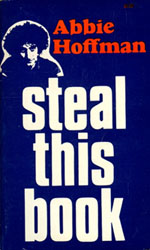Occupy Wall Street (OWS) is a creative and innovative endeavor. OWS has reinvented the concept of a protest. This post is a look at the creativity and innovation aspects of OWS, and not a political commentary.
Public protest did need to be reinvented. As a brand, protests had lost shelf space — media attention. Protests of the last, say 30 years, have been decidedly ho-hum and almost completely ineffective. Between permits, gates, fences, and area exclusions, they were useless as means of democratic self-expression. The media hasn’t seen protests as news for years, but now that’s all changed. OWS is a big story and it will only get bigger until something — the conditions, government, authorities, laws, change.
How did OWS get media attention and reclaim the protest as an agent-for-change brand? Here’s my list of how they’ve been creative and innovative:
1. They aren’t asking for permission. This is non-violent protest, and they’ve been careful about it, but it is clearly civil disobedience. They’ve been savvy about how far they’ve gone with rule breaking and in the process have taken back control of the protest brand. Before OWS protests were toothless tigers, now, they have a tiger in their tank. Taking over public areas and making the whole thing continuous and viral — it’s out-of-the-box, break-the-rules thinking.
2. Franchising the Sit-In. The ‘occupy’ is a brand update to the good old fashioned sit-in, but OWS has gone Way Bigger and essentially franchised the idea. The boldness and success of the early events inspired the events that followed. In innovation we always try to think big don’t we? Look at the How To Do It page here. This web page might be the most effective protest literature since Jerry Rubin’s Steal This Book.
3. They’ve made strategic use of new technology, Social Media. Yes, we’re talking Twitter, Facebook, blogs of all sorts, and a new player, the anonymous no-login, Vibe. When the news media pays no attention, make your own media, that’s creative. They’ve used Social Media to market the OWS concept, and, to communicate to each other. 60’s radical’s could only have dreamed of such easy access to so many people. New tech has enabled OWS.
4. It’s counter-intuitive but the lack of a focused message or specific demands is actually working for them. It’s allowing OWS to shape their message over time and sculpt it to mirror an increasingly sympathetic public. A multi-dimensional and evolving message is a new kind of strategy for a brand, and in spite of it being “not good marketing” it seems to be working, so, it’s innovative. Will traditional brands try it?
5. The authorities have been tricked into making a classic mistake — over reacting. Instead of responding with simple protection and letting the energy fizzle away — they feed the fire and reinvigorate the story. By treating the OWS people as the enemy, the authorities are creating the story OWS wants, helping them make their point. Gandhi is smiling somewhere. The more they over-react the more OWS gains attention and public support. It’s well done, creative, PR.
6. They’ve leveraged legitimate gripes. Conditions for public protest are ripe. High unemployment, rising costs for tuition, and a sense that average people have been screwed by Wall Street are the feelings of a large percentage of the population. You can argue if the perception of inequality is true, or say they’re whingers, but we’re talking consumer feelings here aren’t we, not purely facts. Perception is reality. Brands listen to consumers, that’s creative.
I’d love to hear people’s thoughts on this, but please, no political rants. Comments about the branding, creativity, or innovation aspects of OWS are of interest, if you want to rant about politics there are plenty of other places to do that.
*****
PS: For boosting your own creativity, read — Jack’s Notebook, a business novel about creative problem solving, available on Amazon. If you’re a reviewer, a college professor, a teacher, or in corporate training, please get in touch with me about the book and creativity and innovation training programs.
PPS: If you liked this post or found it interesting, please comment, and/or subscribe to this blog, thank you)




